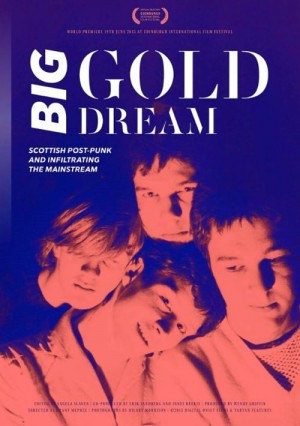 Director: Grant McPhee
Director: Grant McPhee
Genre: Documentary/Music
Running Time: 91 minutes
Expected/Actual Rating: R for Language
Website: Click Here
Trailer: Click Here
Online Rent: N/A
Online Purchase: N/A
Reviewer: Manuel Crosby
Final Score: 7.2 (out of 10)
In 1970s Scotland, a musical wave swelled with energy. The genre of punk music attracted a tenacious following, thriving on the raw energy of its performers and fan base. So fast-moving that it almost instantly transitioned into post-punk, this movement suddenly gave many young people a voice–and a tenacious audience for their music.
Many artists, like Davy Henderson of The Fire Engines, Hilary “HL-Ray” Morrison of The Flowers, and Robert “Rab” King of The Scars, found an avenue for expression through this movement. And some aspiring entrepreneurs, like Fast Records founder Bob Last, turned this energy into record sales while launching successful distribution labels.
But this musical environment in Scotland constantly evolved, shifting again from post-punk to mainstream pop. Through all this, new groups that would have felt out-of-place in prior years were launched into a larger spotlight. Some already established artists and executives were able to infiltrate the newer mainstream market. Others were unable–or unwilling–to make the transition, yet remain remembered for their contributions to the post-punk scene. Big Gold Dream, a documentary by Grant McPhee, provides a look at many people and groups who interacted and influenced each other during this era in Scotland.
Story
This film presents a great variety of detail about the punk, post-punk, and mainstream pop music landscape in Scotland during this particular era. Director McPhee and company managed to obtain a very high number of interviews from people who were active in these music scenes, from musicians to label managers. Furthermore, the movie shows the chronology of these historical events, giving some insight into how the music evolved from post-punk into mainstream pop. In terms of providing a broad overview of the topic, the filmmakers succeeded.
However, the film was kind of scattershot, uncertain of rather to emphasize individual bands or a general movement. They seemed to have sacrificed needed depth in their desire to cover as many groups and labels as they could manage. Though the interview subjects in the film clearly have very interesting personal stories, the movie did not delve into these stories as deeply, leaving me feeling like I didn’t really know who these people were.
Watchability
Overall, the technical aspects of this film are well-executed. The image quality is usually very good, and also includes a lot of archival footage from the 70s and 80s. Interviews are often nicely-shot, usually in visually-interesting locations. The filmmakers recorded very good sound overall–the only exception being one interview which was recorded in a noisy café. They also include an extensive soundtrack of music recorded by the bands featured in the film, which adds great texture. Furthermore, the editing blends video footage, old film recordings, and still images seamlessly. The main detractor from watchability is the fact that the structure of the documentary lacks the focus on emotional, individual connections needed to tell a compelling story. This lack of focus made it easier to get inundated with facts and began to pull me out of the documentary, especially toward the end.
How Far Did you Watch Through It:
100%
No glaring issues made the film painful or uncomfortable to watch from the beginning. I always like to give every film a fair viewing, regardless of how it seems at first. However, my interest did wane about 75% of the way through due to the overwhelming coverage of so many bands and labels, rather than a deeper insight into select individuals.
Closing Thoughts
Big Gold Dream is a technically-solid documentary containing a lot of information about the evolving Scottish post-punk and pop scene in the 70s and 80s. Outsiders to these musical genres may find the movie less interesting due to its lack of focus on personal journeys within the larger musical scene. However, this documentary should appeal to fans of these musical genres, and of the bands that arose from the region to make their mark.
Final Score:
7.2 – Worth watching at home for punk and post-punk fans.



